Trinidad And Tobago Day: Leatherback Turtles Laying Their Eggs; A 100 Million Year Old Ritual
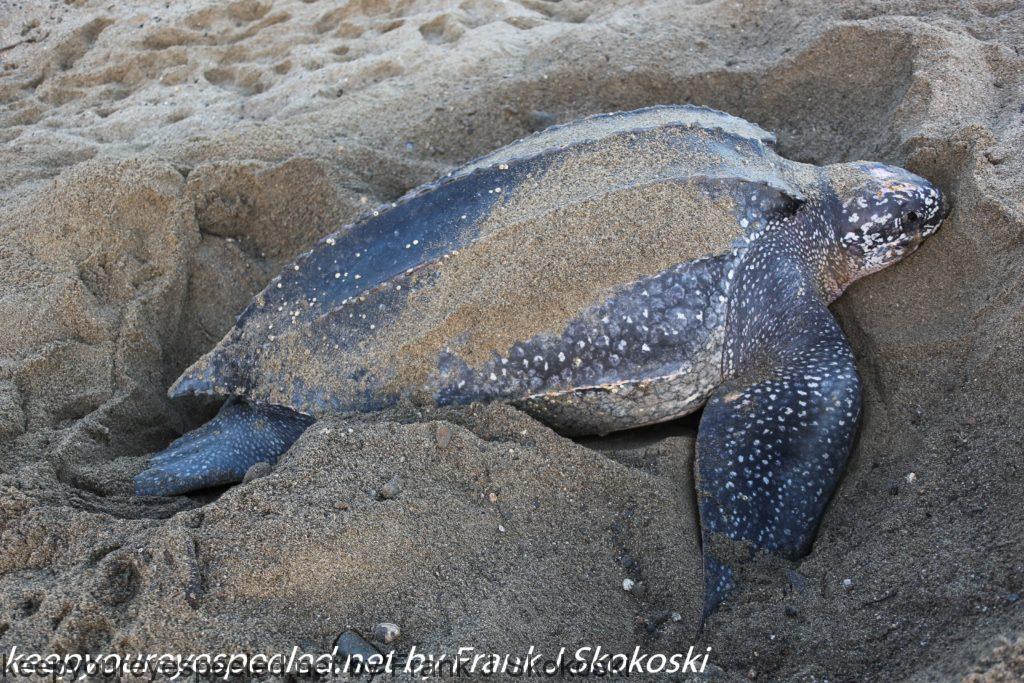
Leatherback turtles are the largest species of turtle on our planet. They can weigh up to 2000 pounds and grow to over seven feet in length. The male turtles never return to land once they enter the ocean as a hatchling. They spend their entire lives, some living over 100 years, roaming the oceans. . The female turtles, once they reach maturity when they are 30 years old, return to the beach where they were hatched to lay their eggs. I traveled to the remote village of Grande Riviere on Trinidad’s remote northeast coast to watch this ancient ritual. 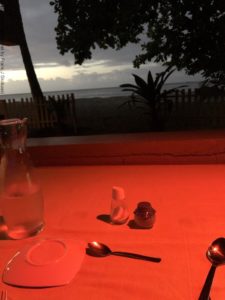
After dinner at the Mt. Plaisir Estate Hotel, I waited, with about twenty other guest staying at the hotel, for our guide to take us to the beach. Access to the beach is closed during turtle nesting season, (March until August) from 6 p.m. to 6 a.m. He arrived around 9 p.m. We walked from the dining room of the hotel on to the beach. We were only allowed to use dim red flashlights on our walk. The leatherback turtles are not disturbed by the dim red light. We only walked a 100 feet when we came upon a huge female leatherback turtle in the process of laying her egg on the beach. 
It was an amazing sight. Sprawled out on the beach was a 300 pound turtle using her flippers to shovel sand away from the area she had chosen to lay her eggs. I know it is only a turtle but I immediately felt like I was intruding on something personal. Our guide assured us that we were not affecting the nesting process in any negative way. Here is a link to a Youtube video of the turtle on the beach. 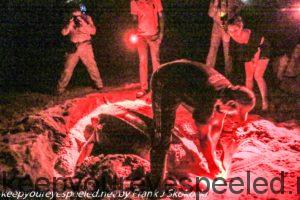
While watching the turtle our guide provided us with information on the life of the largest sea turtles. He explained how these huge creatures have a unique leathery carapace instead of a hard shell. This allows these large reptiles to dive much deeper than turtles with harder shells. They can dive to depths of 3000 feet in search of jellyfish, their primary food source. As our guide explained the nesting process, the turtle continued to create a hole with its back flippers. We watched as the turtle carefully remove the sand and smoothed and secured the sides of the hole. Just before the turtle was about to lay her eggs she went into a trance like condition . We were allowed to touch this magnificent creature. Here is another video of the turtle. 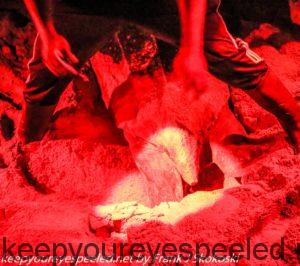
Soon the turtle dropped almost 35 eggs into the hole. It was amazing. We learned this was a younger turtle. Older turtles may lay up to 80 eggs. After laying the eggs the turtle carefully shifted the sand to hide the eggs. She moved a lot of sand and was exhausted. It was now after 11 p.m. I wanted to get up early the next morning to see if any remained on the beach after 6 a.m. So I walked back to mu room under the star filled southern skies. It was a long day and I was exhausted too. I feel asleep underneath mosquito netting listening to the roar of the ocean outside my window. It was another good day in Trinidad and Tobago. Here is a link to some more photographs from my evening watching the turtle. Trinidad and Tobago Day Six Turtle on Beach April 29 2019 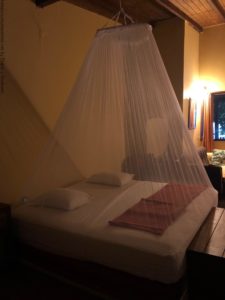
I slept well that night but I was up early, before 6 a.m. I was outside in the morning twilight. 
I saw a few folks on the beach but I waited until after 6 am. until I approached this leatherback turtle still on the beach in the morning light. 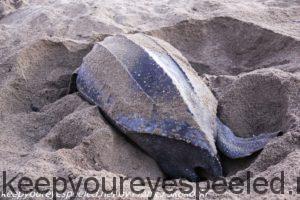
It was an even more amazing scene in the light of day. This turtle was of similar size as the one we in the dark. It followed the same process as the turtle did the night before. It was already carefully scooping out sand to create a hole with its hind flippers. It would pack the sand on the side of the hole before it removed more sand. It than laid its eggs in the hole and carefully pushed in warm wet sand to cover them. Here is a video of the leatherback turtle on my YouTube channel.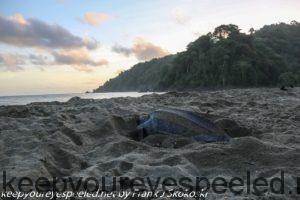
I watched in fascination at this million year old process.It is amazing that no one teaches these female turtles how to perform this complicated actions to carefully create a secure and hidden nest for its eggs. it is passed on in their DNA. I am continually amazed at the beauty and complexity of nature. Here is a link to another video of the leatherback turtle. There a few more videos on my YouTube channel. 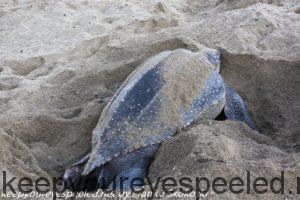
It will take a few weeks for the eggs to hatch. Only a few of the hatchlings will make it to the sea. Many predators will await them on their journey including this vulture who were already watching and waiting to see if the turtle will leave an egg exposed. 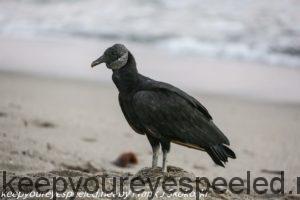
I watched the turtle for a little while but i wanted to do get some breakfast before I did some hiking. So I walked the few hundred feet back to the hotel where I had some excellent coffee and a nice breakfast. Here is a link to some more photographs of the turtle. Trinidad and Tobago Day Seven Turtle on beach April 30 2019. 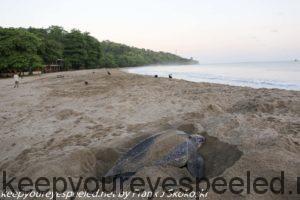
“I hope for your help to explore and protect the wild ocean in ways that will restore the health and, in so doing, secure hope for humankind. Health to the ocean means health for us.”— Sylvia Earle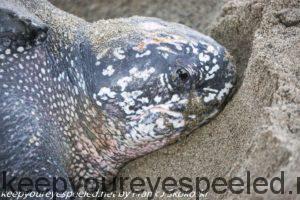
Categories
Recent Comments